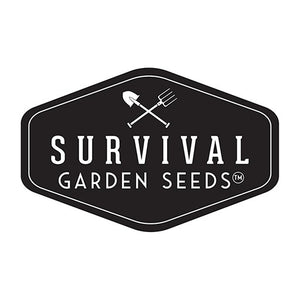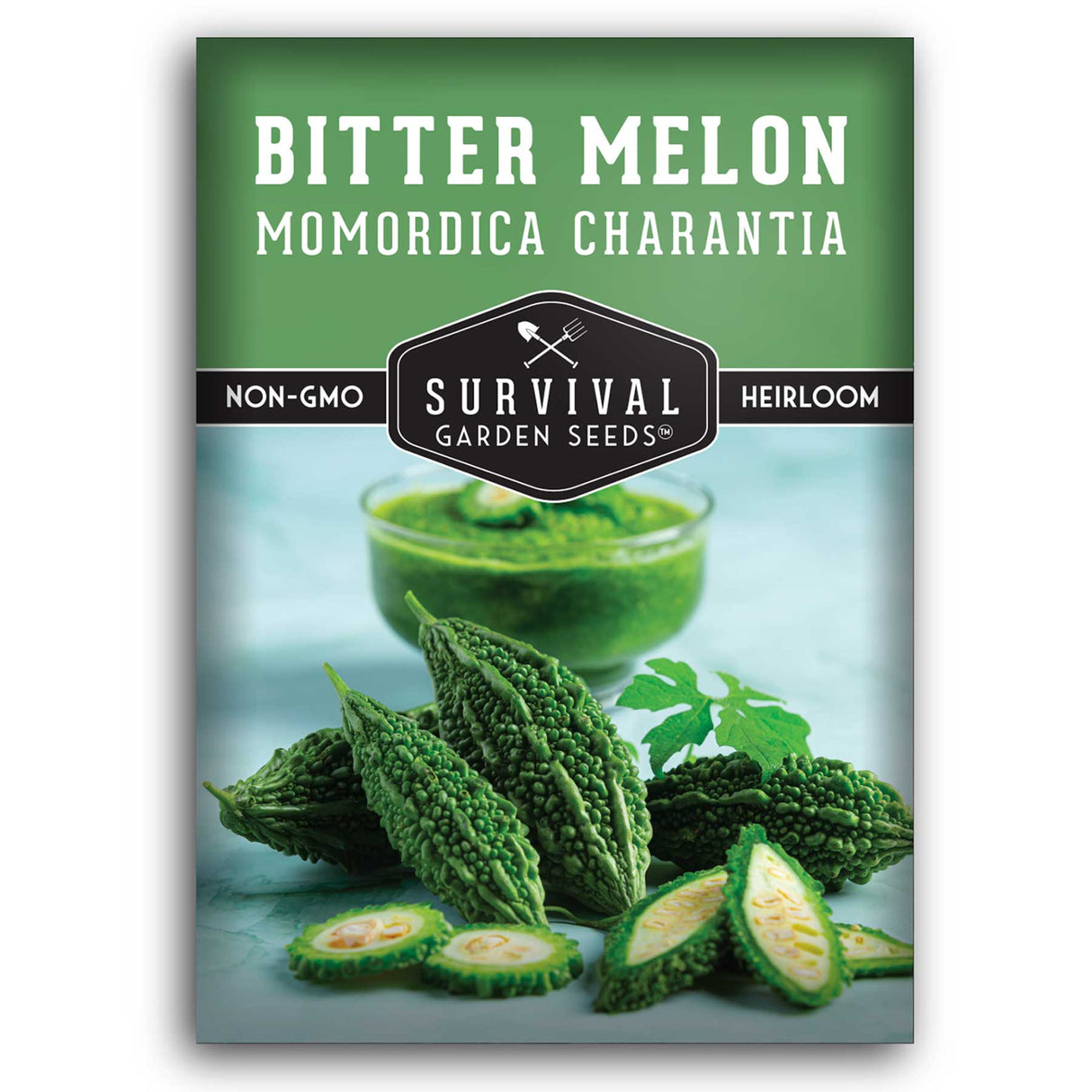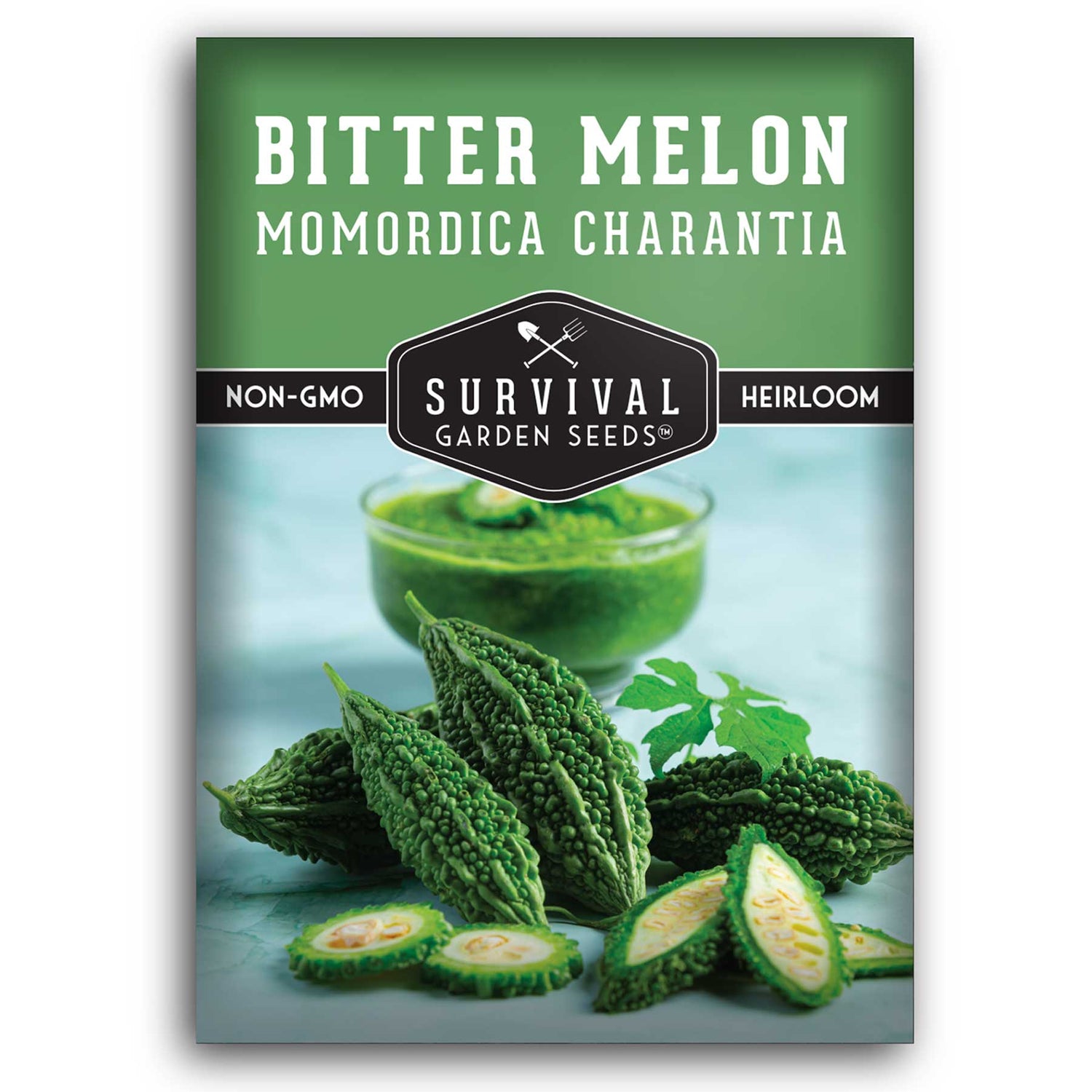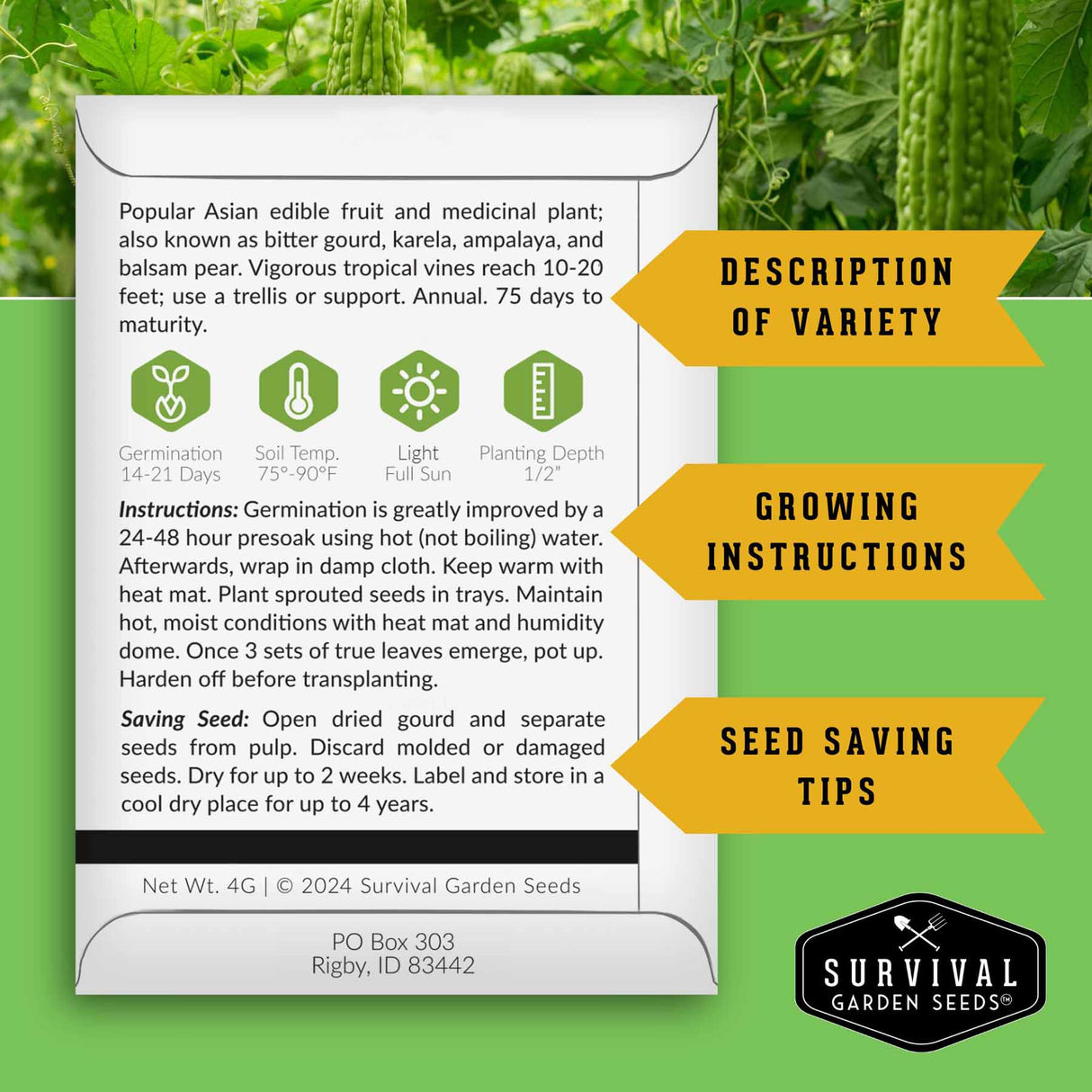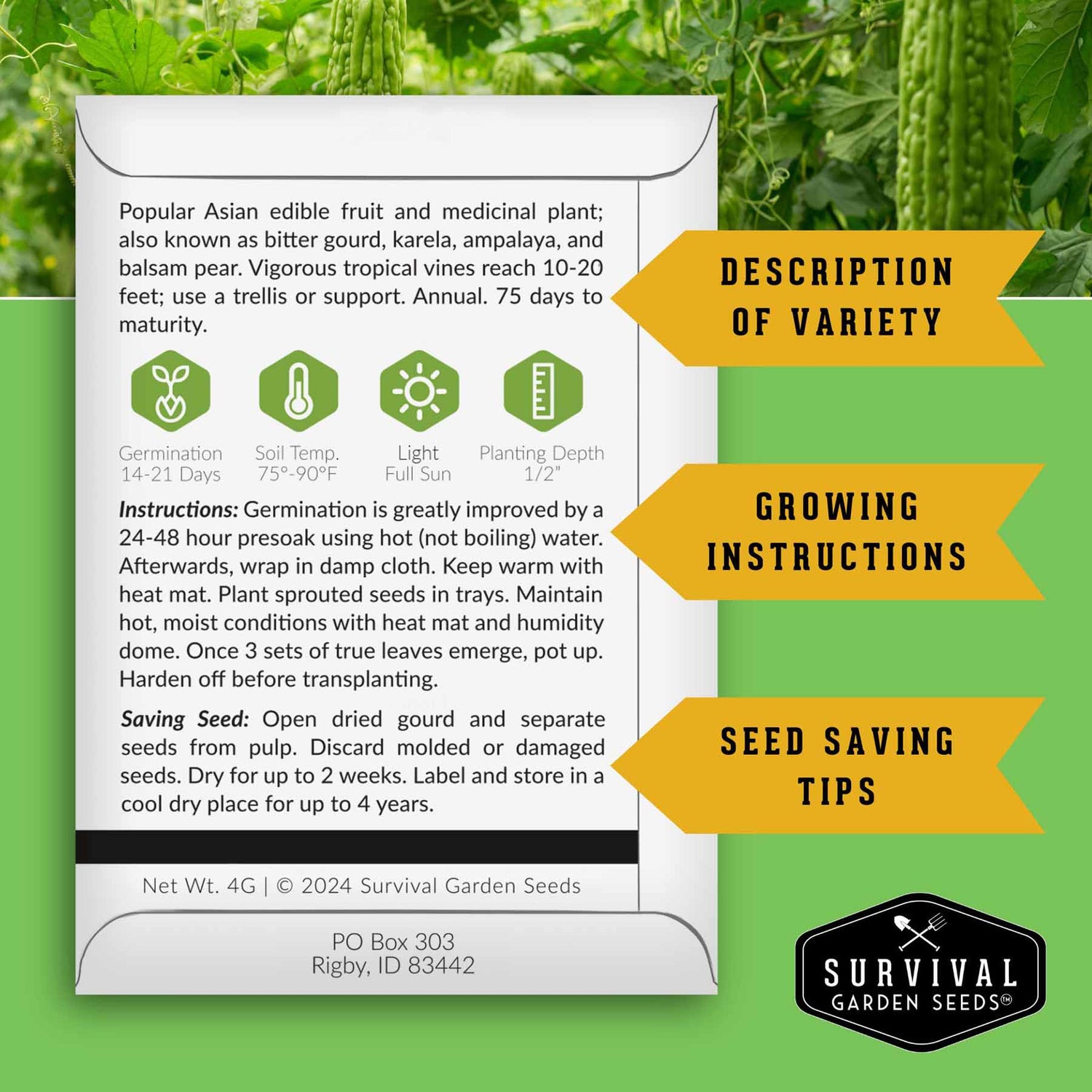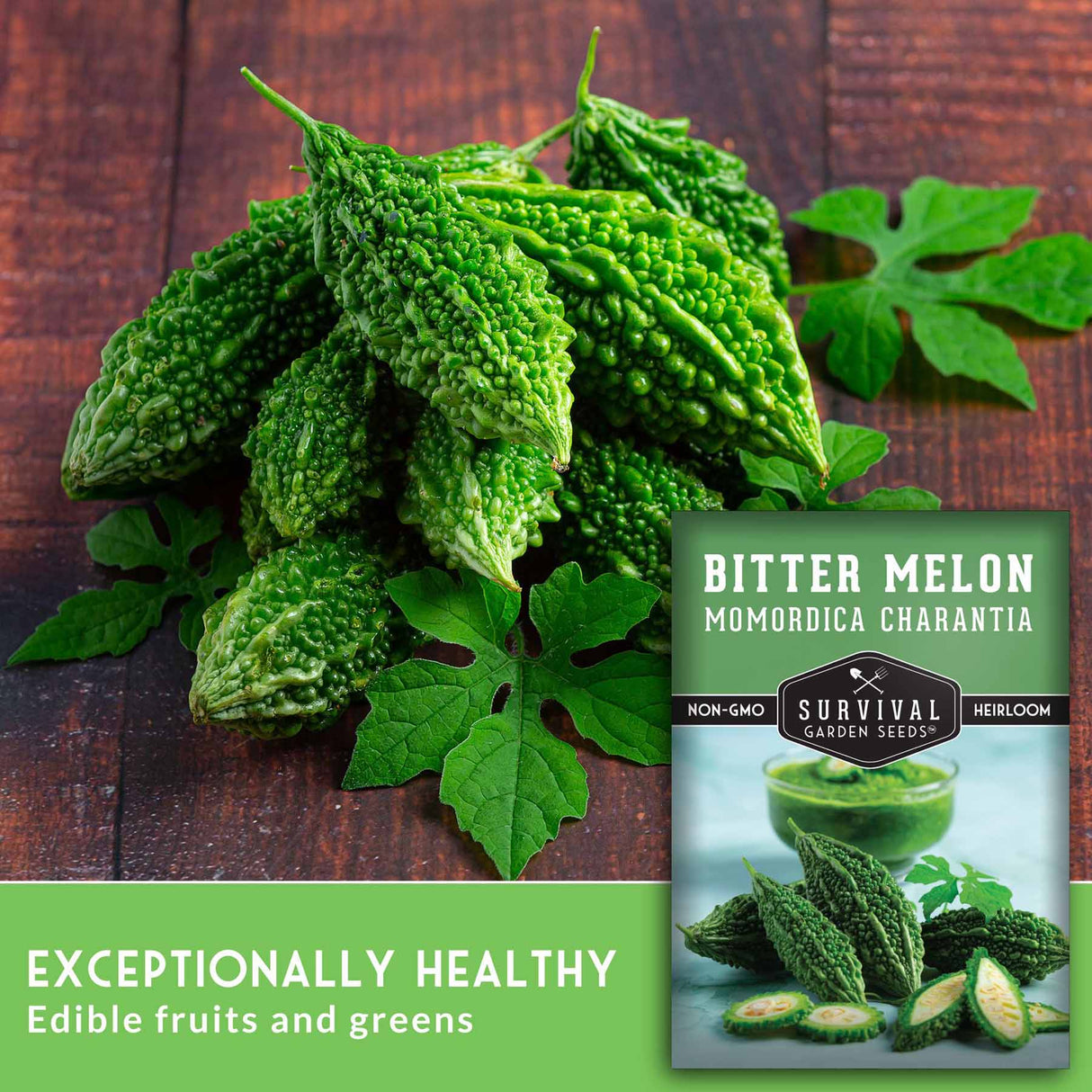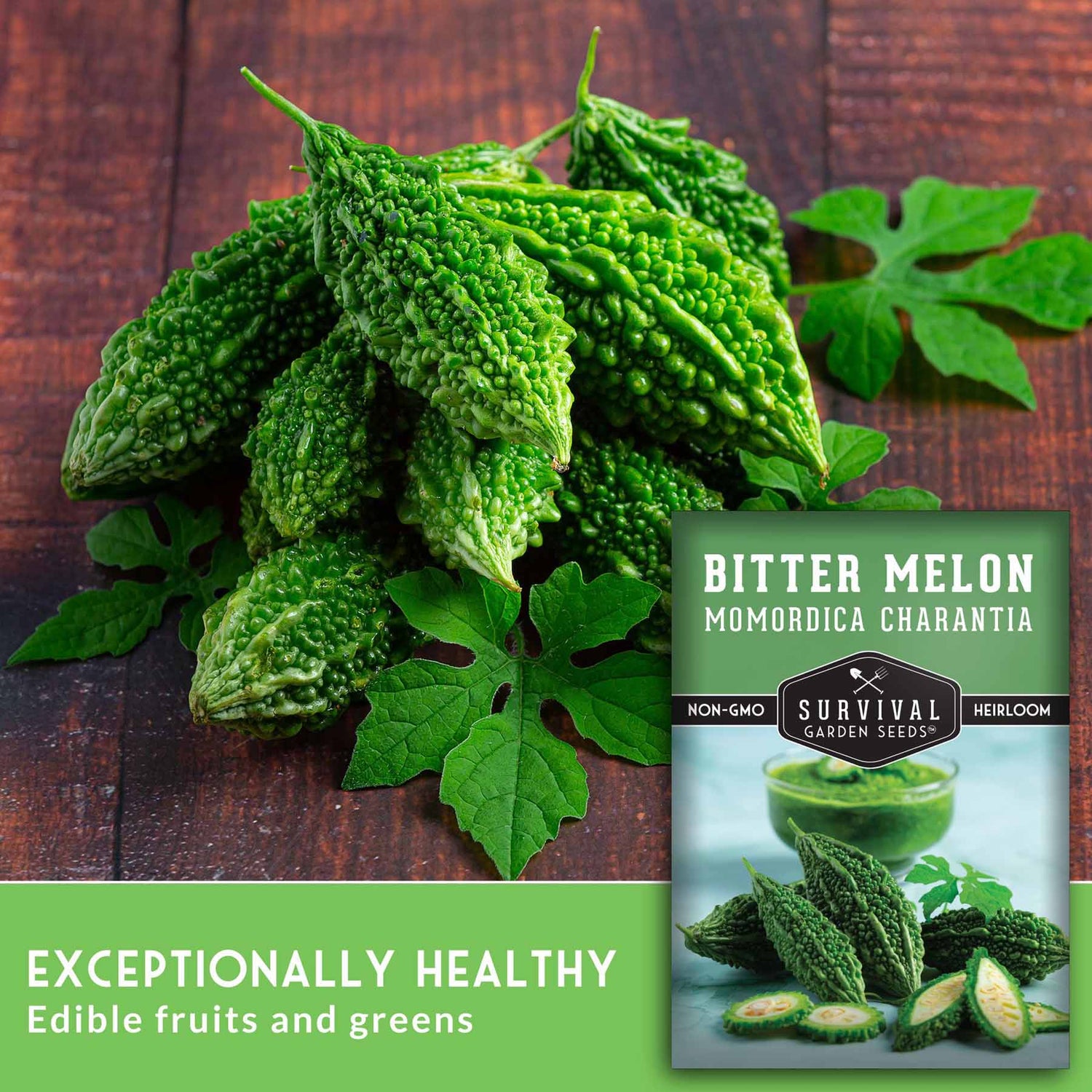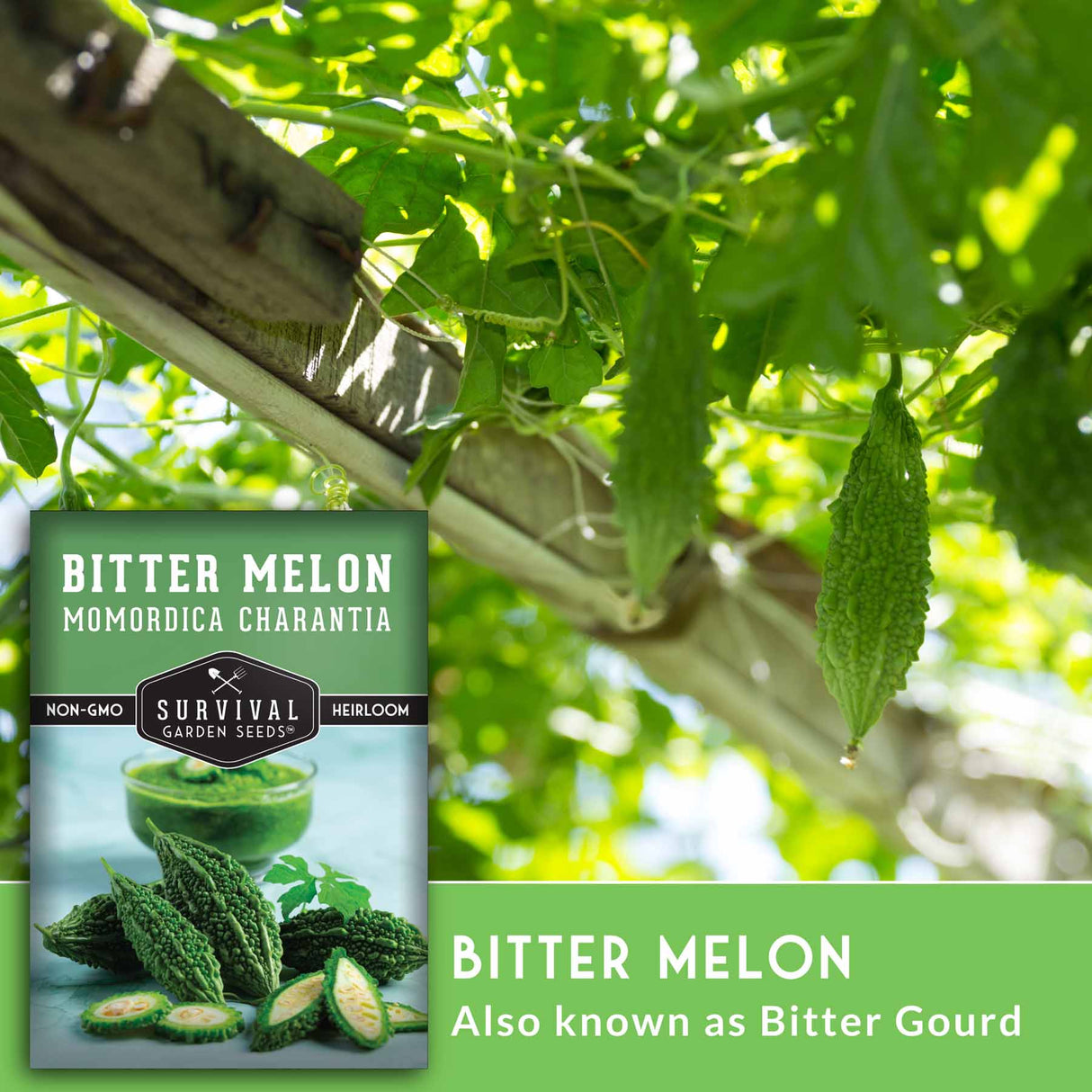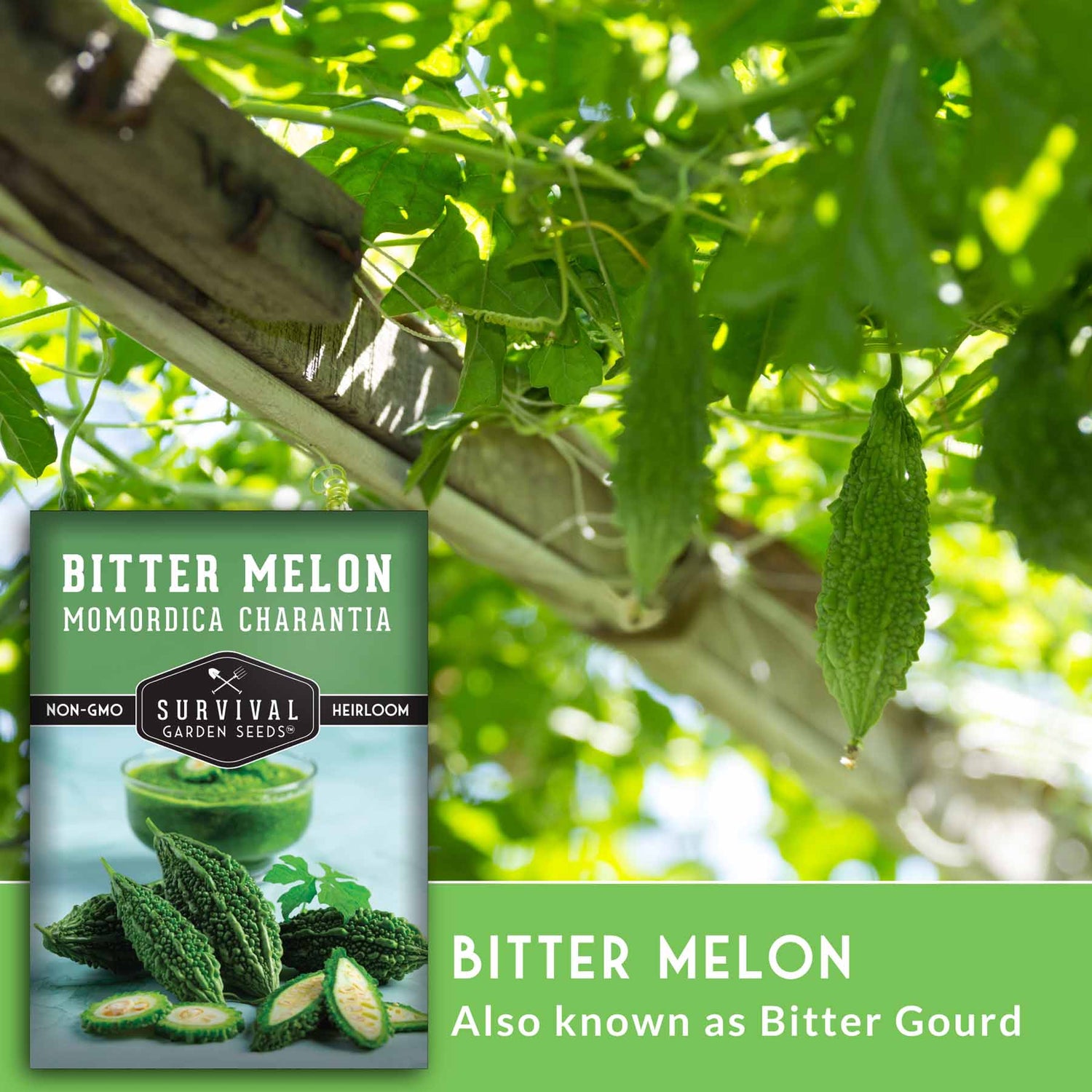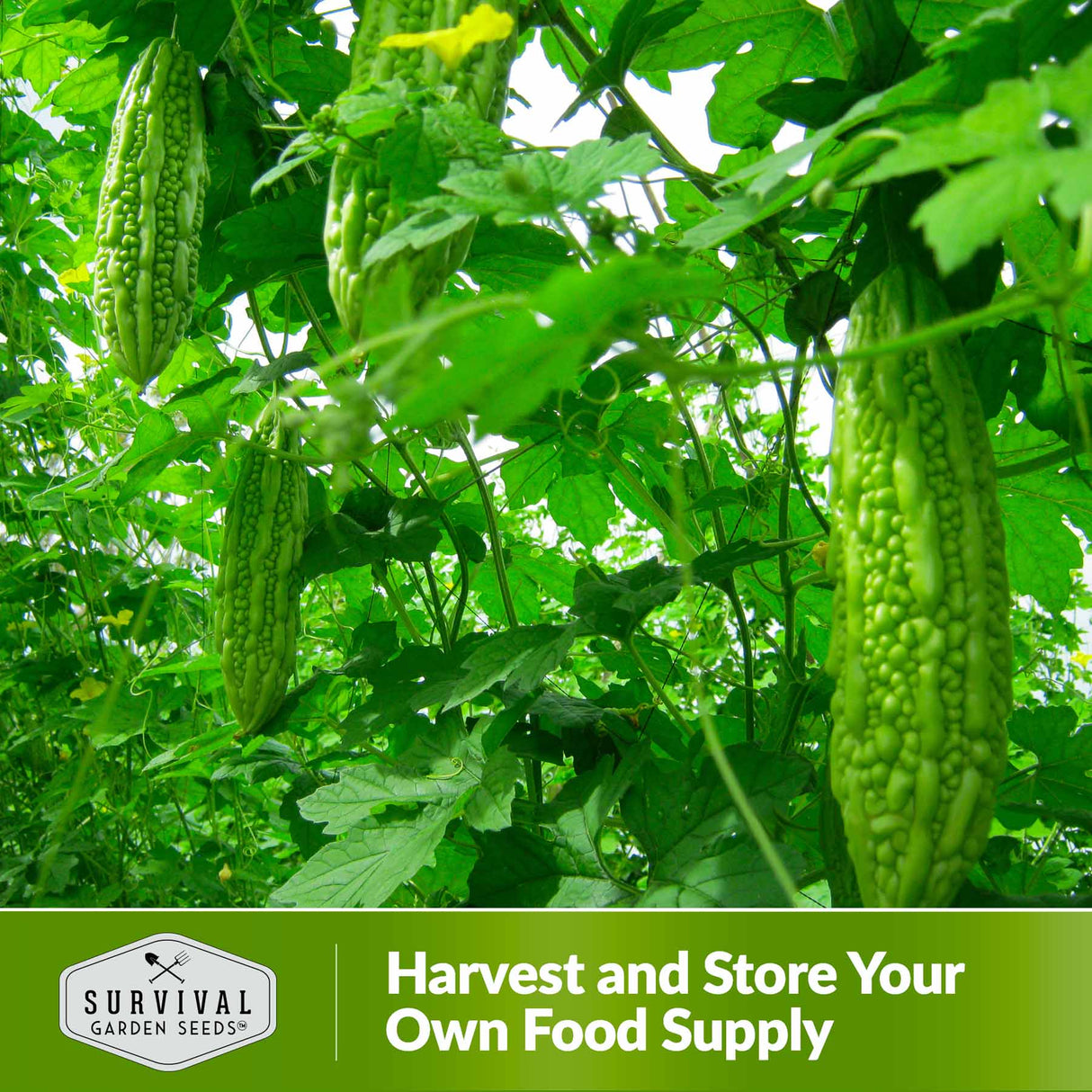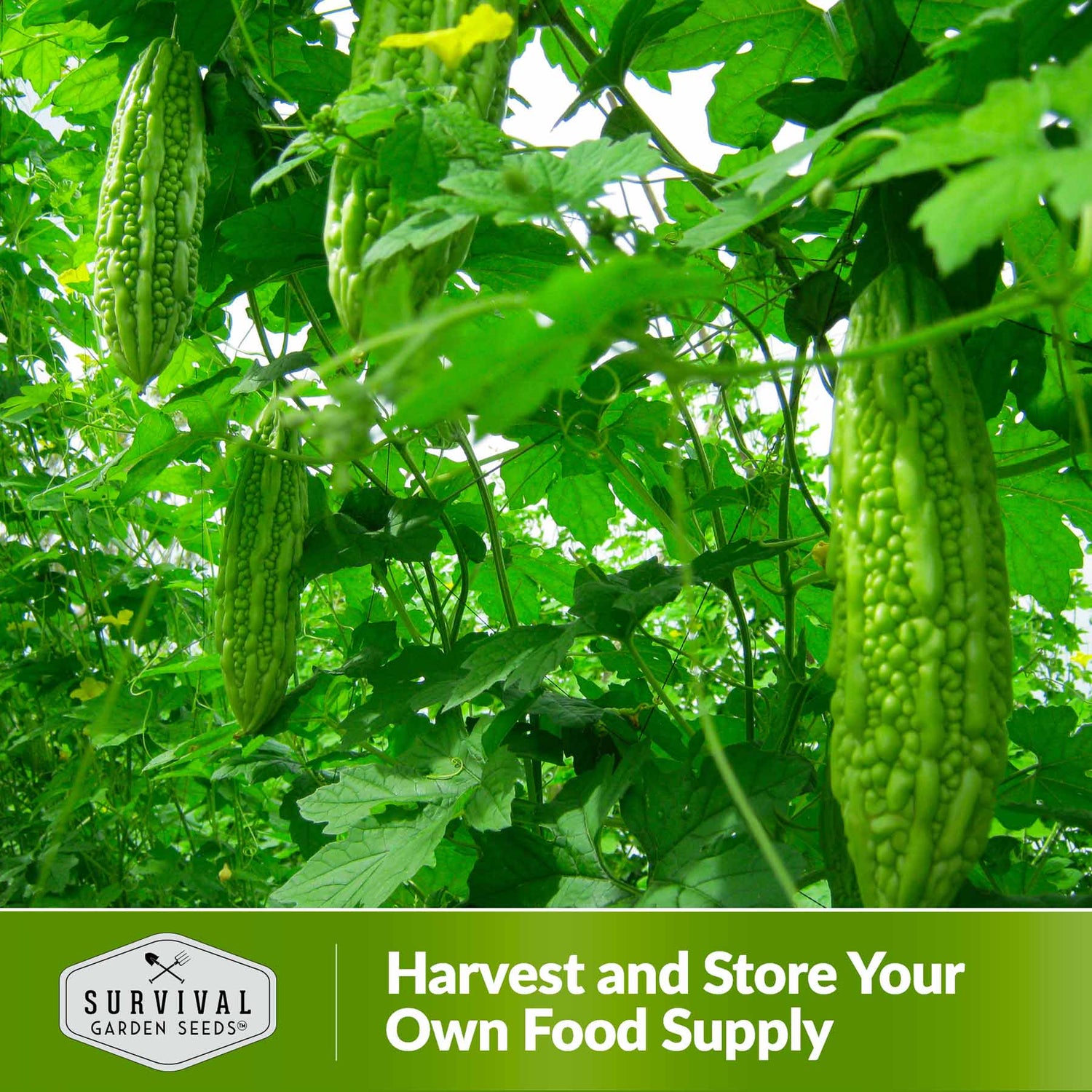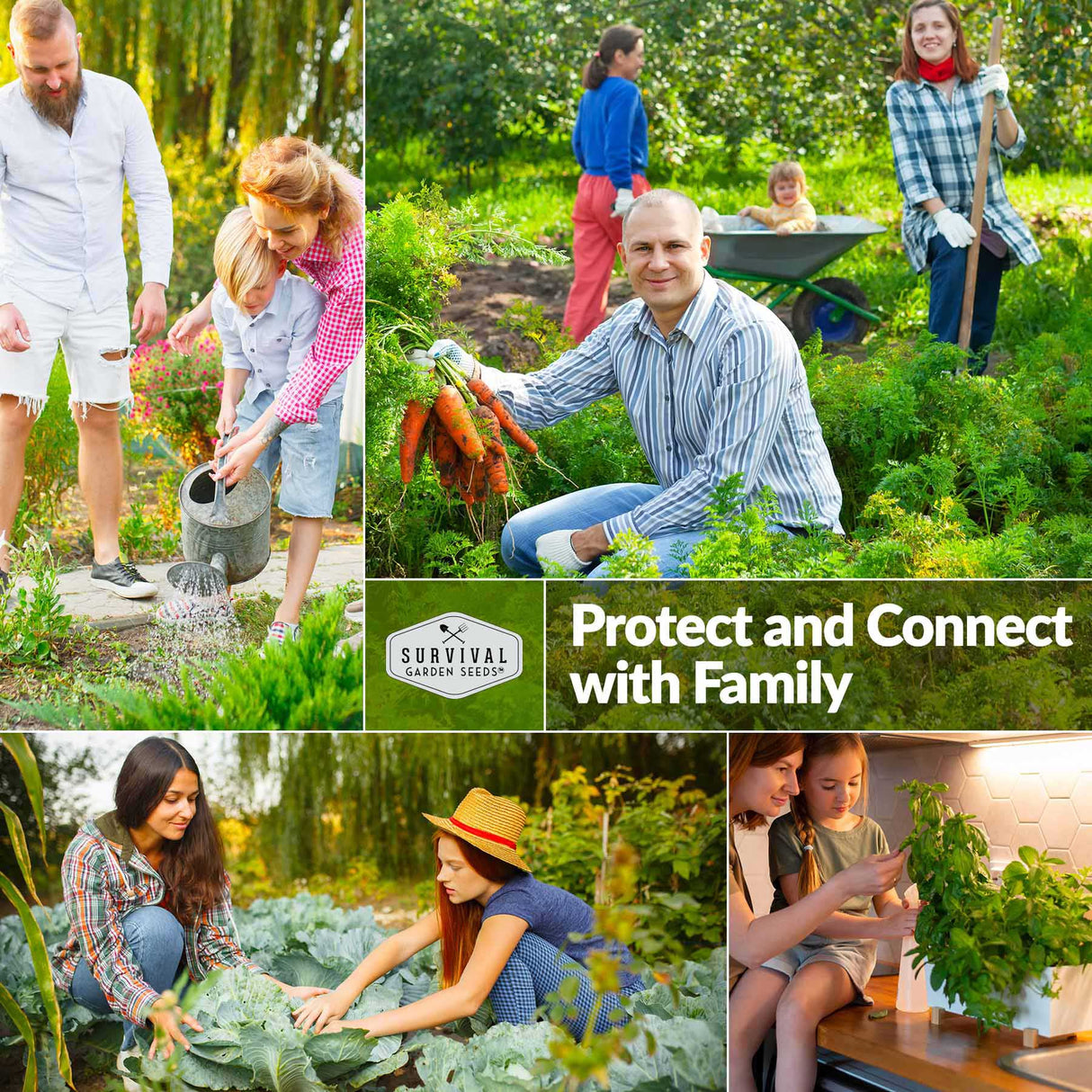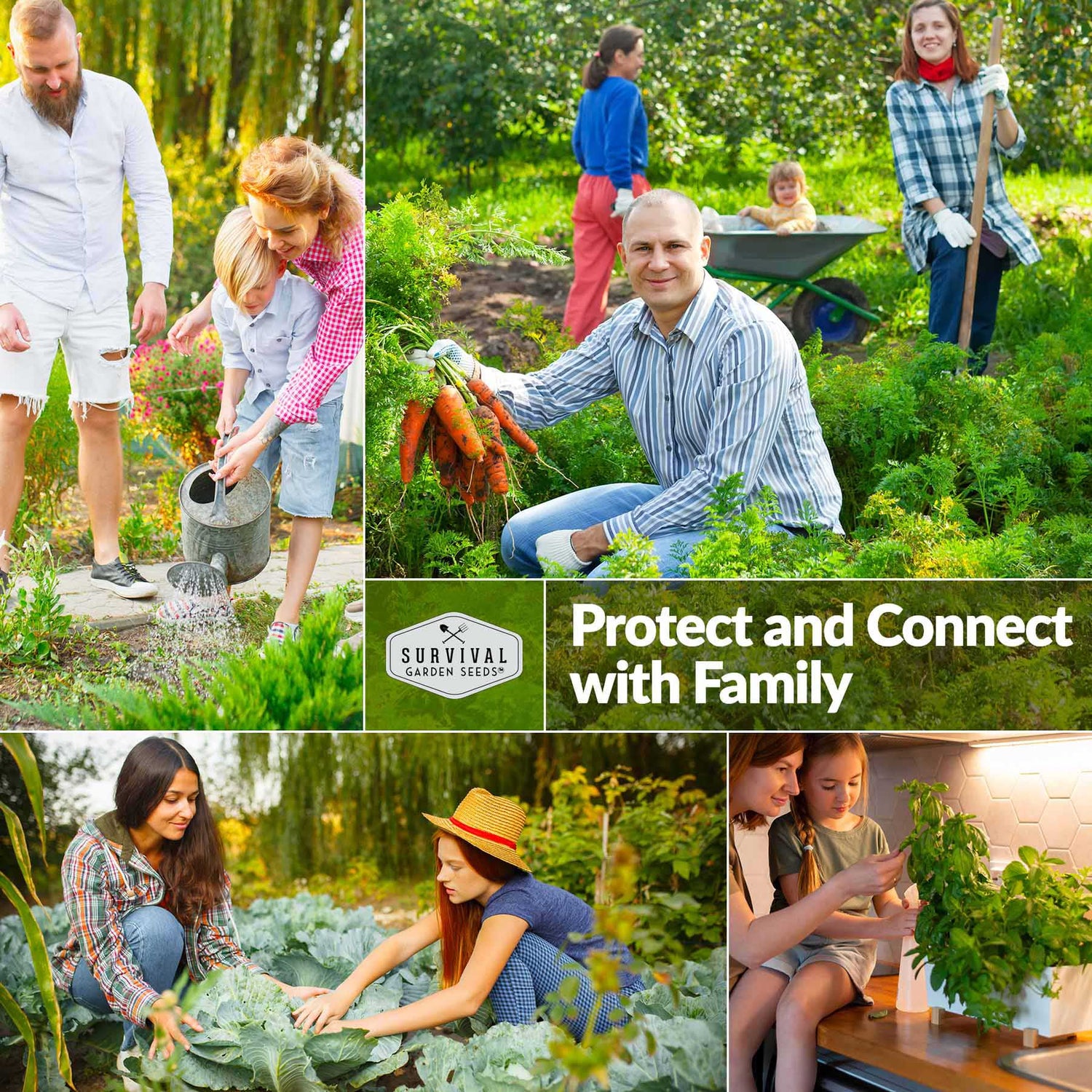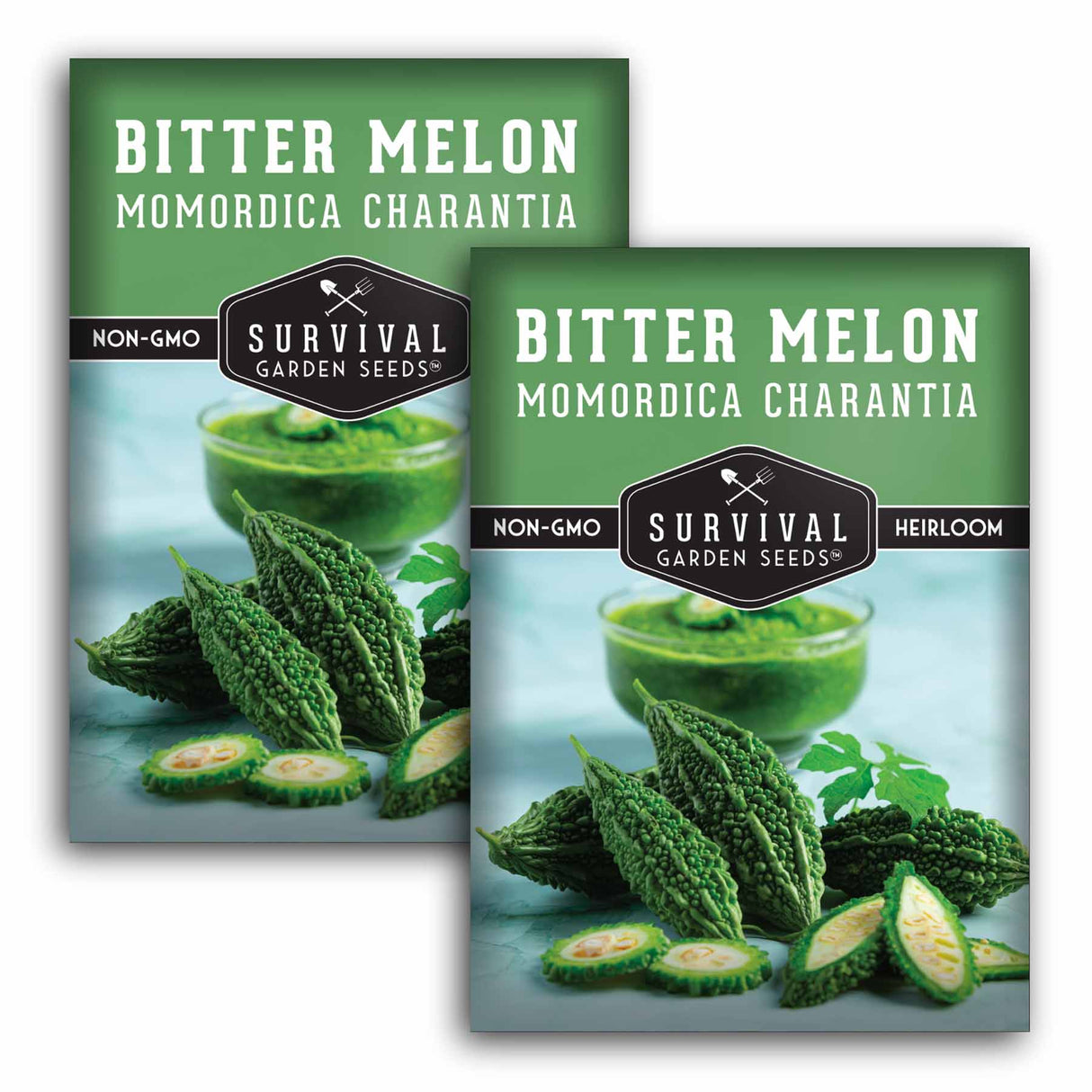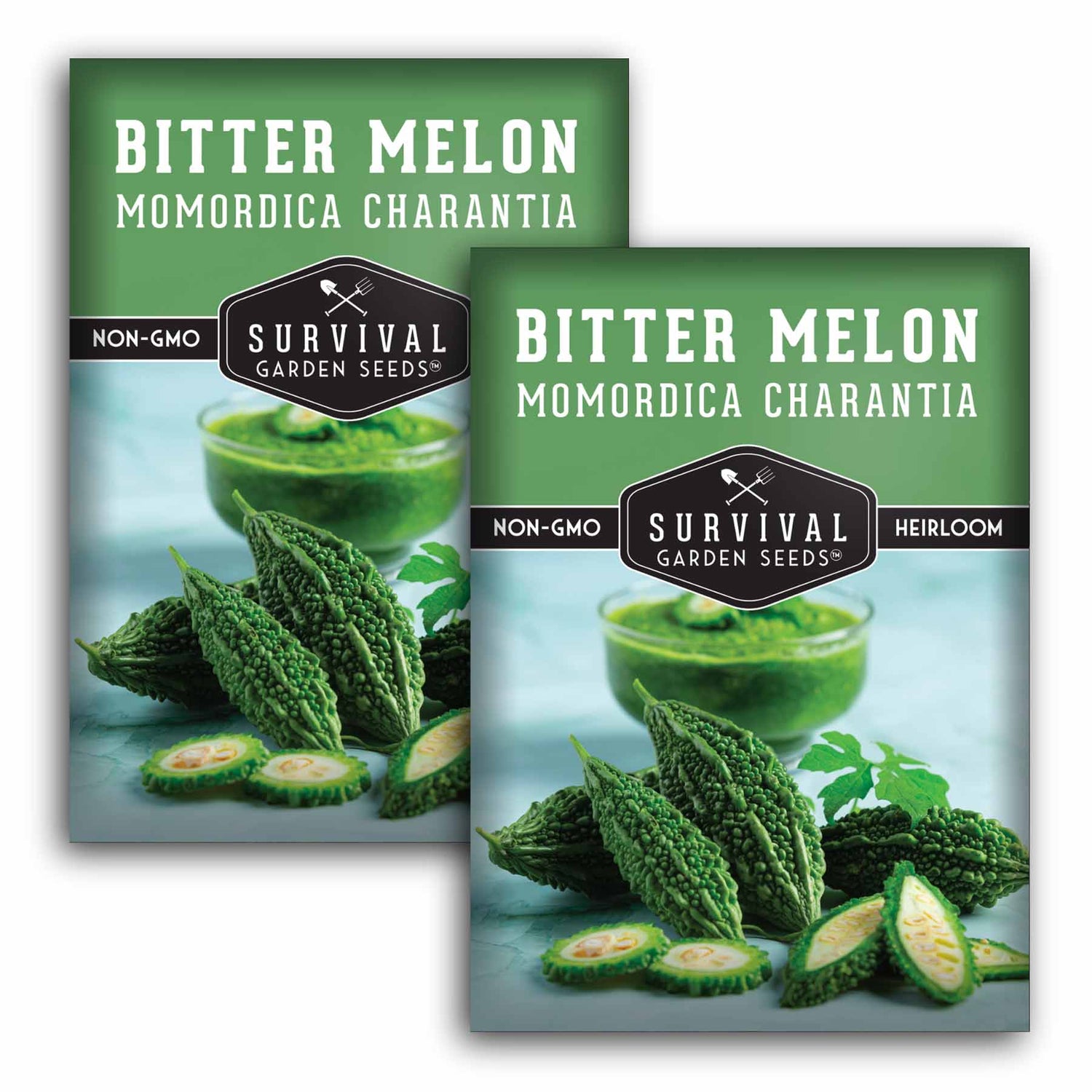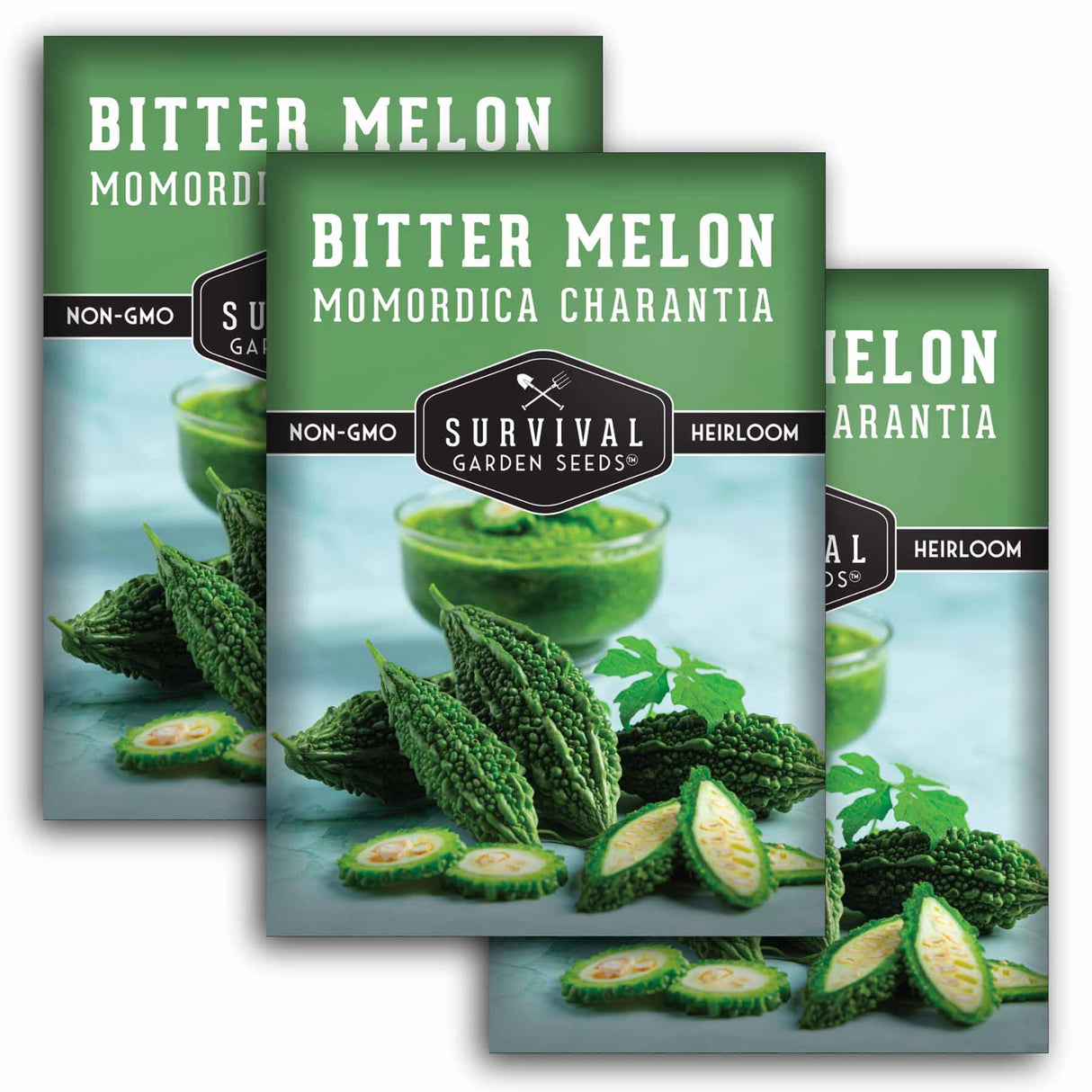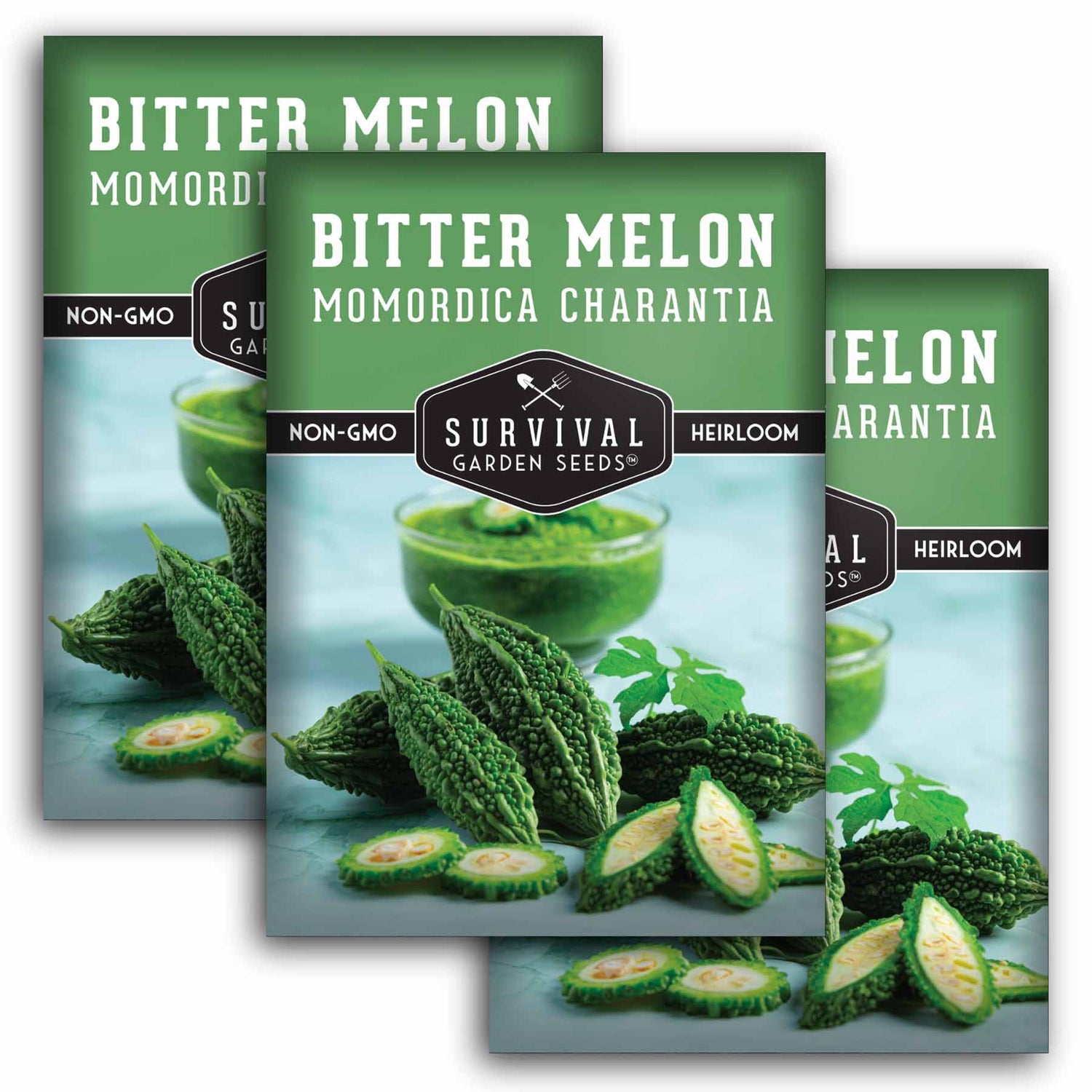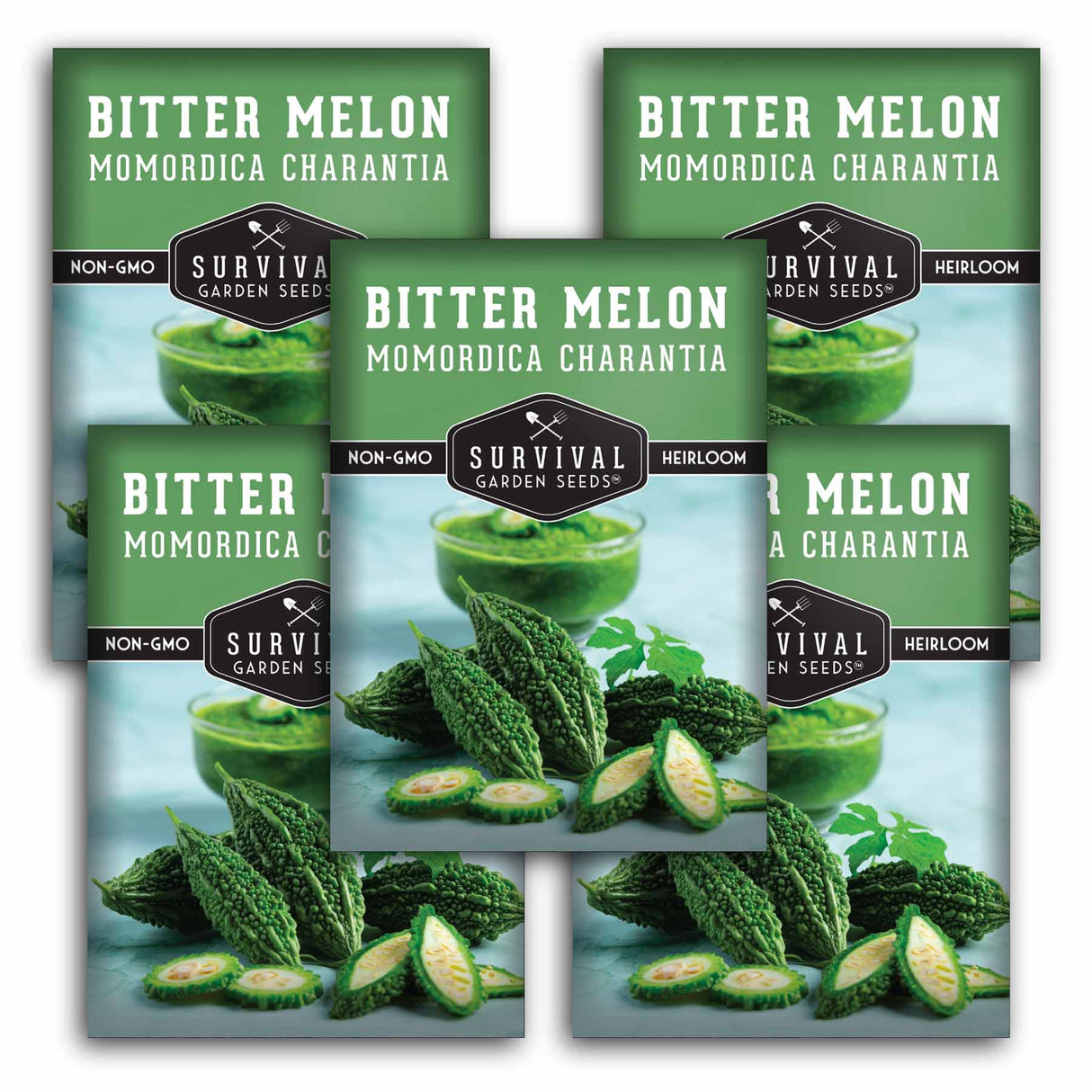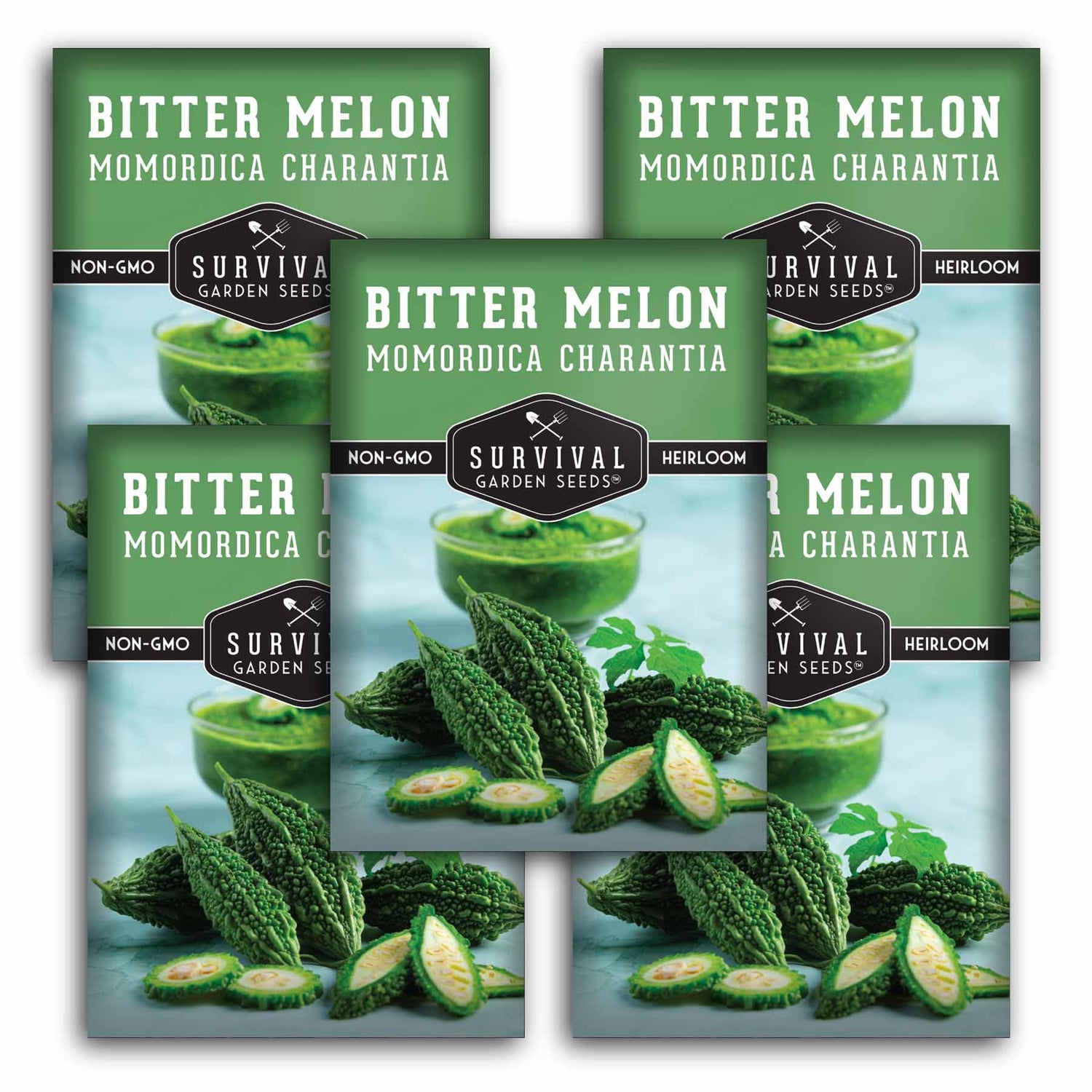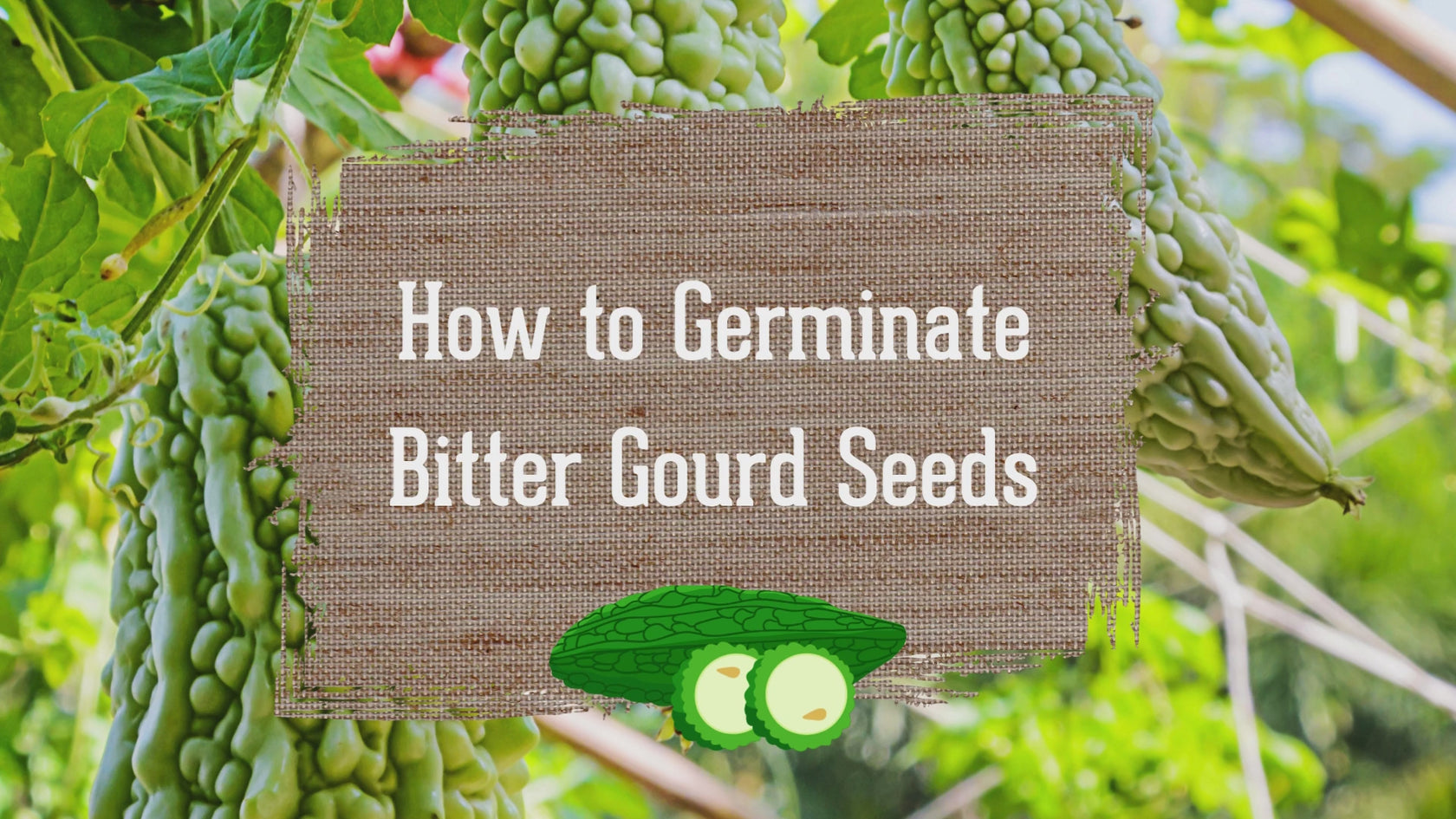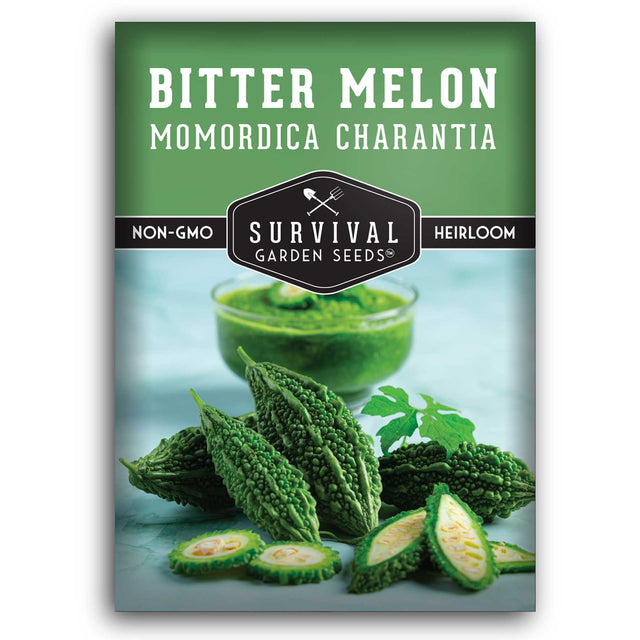Bitter Melon Seeds - Bitter Gourd
Bitter Melon Seeds - Bitter Gourd - 1 Packet is backordered and will ship as soon as it is back in stock.
Bitter Melon, (Momordica charantia), also known as Bitter Gourd, Karela, Naja, Ampalaya, Bittermelon, Balsam Pear, and Bitter Apple, is a rewarding and exotic vegetable to grow in your garden. This tropical to subtropical plant is a staple in many Asian countries and is often used in Indian, Japanese, Chinese, and Thai recipes.
Bitter melon’s vigorous growth and substantial yield make it a fantastic choice for your home vegetable garden. Plant it in a spot with 8+ hours of full sun daily, and provide a trellis or other support for the vines to climb and for better air circulation. In regions with cooler temperatures, start early for a longer growing season and protect plants from cold snaps.
- Tropical Bitter Melon - Heirloom Bitter gourd (Momordica charantia) seeds. Also known as karela, ampalaya, granja, and many other names, these vigorous heat-loving vines produce an abundance of green, cucumber-shaped melons with warty skin and tender flesh similar to chayote or bell pepper. Harvest fruit at 5-12 inches. The young shoots and baby green leaves are excellent for eating.
- Needs Heat & Humidity - Bitter melon seed germination is greatly improved by soaking seeds for 24-48 hours before planting. Wrap in a damp cloth and place in a sealed container on top of a heat mat. After germination, maintain hot, humid conditions by planting seeds in trays covered with a humidity dome. Once 2-3 sets of true leaves emerge, pot seedlings up carefully. Slowly harden off before moving outdoors to a warm location with 8+ hours of sun. Water regularly for best fruit production.
Learn More: How to Grow Bitter Melon
Net Wt. 4G
Heirloom Vegetable Seeds
All of our seeds are open-pollinated, non-GMO, heirloom varieties with tested germination rates
Specifications
Specifications
-
Planting Zones
-
Light
-
Soil Temp for Germination
-
Germination Time
-
Planting Depth
-
Plant Size
-
Days to Harvest
-
Growing Instructions
-
Seed Saving Instructions
-
Approximate Number of Seeds Per Packet
Payment & Security
Your payment information is processed securely. We do not store credit card details nor have access to your credit card information.
How to Germinate Bitter Melon Seeds
Bitter Melon can be challenging to germinate. Here's a method we found useful.
Why Choose Survival Garden Seeds
At Survival Garden Seeds, we believe in preparing today for tomorrow’s peace of mind. That’s why we offer only heirloom, non-GMO, and untreated seeds you can trust to nourish your family and support a sustainable lifestyle. As a family-owned American company, we’re committed to providing seeds that grow strong and true—helping you cultivate health, resilience, and beauty in your garden.
Frequently Asked Questions
What are heirloom seeds?
What are heirloom seeds?
Heirloom seeds are the types of seeds your grandparents grew. These varieties have been passed down from generation to generation. They’re old reliable open-pollinated varieties that aren’t typically grown commercially. Instead, they have a rich history that predates modern breeding techniques.
You can learn more about open-pollinated, heirloom, and non-GMO seeds in our Survival Garden Training blog.
How do I know my seeds are fresh?
How do I know my seeds are fresh?
Every seed packet includes a "packed for" date, and we germination test each seed lot before packaging to ensure you receive viable, high-quality seeds that are ready to grow.
Are your seeds treated?
Are your seeds treated?
No, we do not pre-treat our farmer seeds. All of our garden seeds for sale are untreated, open-pollinated, non-GMO, and heirloom varieties. They are kept in temperature-controlled cooler storage until they are packed and shipped to keep them pest and disease-free.
In what zones can I grow your seeds?
In what zones can I grow your seeds?
The seeds in our collections are specifically chosen from varieties that can be successfully grown from Zone 3 to Zone 10 USDA Hardiness Zones. However, individual varieties have specific needs to thrive in different environments. Each seed pack has optimal temperatures for germination and instructions on seed starting. Consult local frost dates to plan your garden and get the most out of your seeds.
What is the shelf life of these gardening seeds?
What is the shelf life of these gardening seeds?
Most seeds remain viable for 3 to 5 years or longer when stored properly. Check your seed packet for specific varieties. For best results, keep your seeds in a cool, dry place away from direct sunlight and moisture. Store them in an airtight container in a consistent temperature environment—a refrigerator or cool basement works well. Proper storage helps maintain germination rates and extends seed life well beyond the packed date.
Where are Survival Garden Seeds sourced?
Where are Survival Garden Seeds sourced?
The majority of our seeds are sourced in the United States, with a few exceptions when the seed is difficult to source domestically. Whenever we do have to source outside of the US, we ensure our seeds are safe to grow, non-GMO varieties that meet our standards for germination and reliability.
